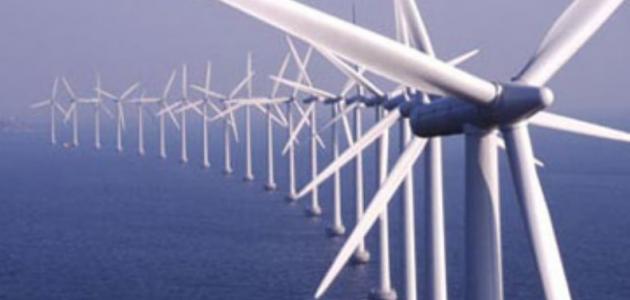Definition of energy
Energy is defined as one of the properties of matter, which can be converted into one of the following forms: work, radiation, or heat. With this definition, it goes beyond the common definition of energy as the ability to accomplish some work, as the concept of energy began to expand during the Industrial Revolution. In the late eighteenth century, it was noted that heat and radiation are two important forms of energy, just like work. Heat is used in many ways as a source of cooling in the summer and warmth in the winter. Radiation can also be felt as energy around us.
Forms of energy
Energy has many forms, all of which fall into two main categories: kinetic energy and potential energy. Below is a breakdown of each:
Kinetic energy
Kinetic energy is defined as the energy resulting from the movement of various objects. Moving objects have the ability to accomplish a task or cause a specific change, unlike static objects, which do not possess any kinetic energy. For example: in the case of throwing a ball. towards a wall, it is able to cause a certain effect on it, while a static ball cannot cause any significant effect. Kinetic energy has several forms, including the following:
- Radiant energy: Radiant is electromagnetic energy that is transmitted and moves through transverse waves, and includes: visible light, x-rays, radio waves, and gamma rays. Light and sunlight are examples of radiant energy.
- Thermal energy: Thermal is the energy resulting from the movement of atoms and molecules in matter. The amount of thermal energy produced increases as the speed of movement of these particles increases. Geothermal energy is an example of this form of energy.
- Kinetic energy: (In English: Motion) is the energy stored in moving objects, as its storage increases as the speed of movement of objects increases, while it is emitted and this energy is released when objects stop, or their movement slows down, and wind energy is an example of this form of energy.
- the sound: (In English: Sound), sound is produced due to the effect of a force on a specific material, which causes this material to vibrate. As a result, energy is transmitted through the materials, in the form of longitudinal waves. It is worth noting that the amount of energy resulting from sound is usually small compared to other forms of energy. .
- electricity: (English: Electrical), electrical energy is transmitted through wires, through the movement of electrons, which are small charged particles. Examples of this energy include: lightning, which is natural electrical energy.
potential energy
Potential energy is defined as the energy resulting from the presence of bodies in a system in a specific order, as each body in the system affects the other body with a specific force. For example: The universe in which we live represents a large group of different systems, varying in the sizes of the constituent bodies. It has, starting with atoms, all the way to the giant planets, and the potential energy is stored in the bodies, or it is released from them according to changing their arrangement, or changing the type of force that affects each other. For example: when there is a book on the ground, this book possesses potential energy. This is because of its existence with the Earth within the same system, as each of them affects the other with the force of gravity, but if the book were located in a vacuum, then it would not have any potential energy, because there is no other body to affect it, and potential energy has several forms, including :
Read also:Research on solar energy- Chemical energy: Chemical energy is the energy stored in the bonds of molecules and atoms, which can be converted into thermal energy, such as burning wood in a stove. Examples of chemical energy include batteries, coal, biomass, and natural gas.
- Mechanical energy: (In English: Mechanical), it is the energy stored in objects as a result of pressure and tension. Examples include: the energy formed in a compressed spring, and the energy stored in rubber bands.
- Nuclear Energy: Nuclear is the energy stored in the nucleus of the atom, which brings the components of the nucleus together. Combining these components, or separating them from each other, leads to the emission of large quantities of radioactive materials, forming nuclear energy.
- Gravitational potential energy: (In English: Gravitational) is the energy stored and latent in objects as a result of being affected by the force of gravity. This energy increases with the increase in the weight of the body and its height above the ground. Hydroelectric energy is an example of this form of energy.
energy resources
Renewable sources
Renewable energy resources are characterized by being sustainable sources that do not run out with consumption, as they are constantly renewed, and they are clean energy that do not produce many polluting emissions and greenhouse gases. Despite all these positives of renewable sources, the heavy reliance It is necessary to use non-renewable energy sources, due to their ability to be stored, in addition to their availability and inexpensive use. Examples of renewable energy sources include:
Read also:Nature in Switzerland- Wind Energy: (In English: Wind), wind is used to generate electricity, through the use of turbines, which can be built in different places, such as agricultural or forest lands, and although wind is considered a clean source like other renewable sources, it may cause visual pollution, And noise, which may disturb residents who live near it.
- solar energy: (In English: Solar), sunlight is an important source for making life on planet Earth possible, as it is used for various purposes, such as heating water, or heating homes in the winter, and it can also be used to generate electricity, either directly using photovoltaic panels, or converting the incident solar rays. It must be used to generate electricity, or by using special stations to produce steam that is used to operate electrical generators to generate electricity. One of the things that must be taken into consideration when using solar energy as a source of energy is that it is affected by the climatic conditions of the region, in addition to the difficulty of storing it.
- Geothermal energy: (In English: Geothermal), the great heat present in the ground of the Earth is a source of this energy, especially in tectonically active areas, as it can be used to generate electricity, heat buildings in the winter, and cool them in the summer. It is characterized by being a clean source like other sources of renewable energy, but it may It leads to the emission of a small number of compounds that contribute to the formation of acid rain.
- Biomass energy: (In English: Biomass), biomass includes different types of materials: such as wood, food scraps, waste, compost, and plant materials, which can be reused and benefited from. They may be used as fuel for heating, or to generate electricity. It is worth noting that environmental impacts must be taken into account. resulting from each of these substances.
- Hydropower: (In English: Hydropower), it is possible to benefit from the potential energy of water in generating electricity, by operating hydroelectric turbines that are constructed near water systems, such as rivers, knowing that this energy is produced by storing water in dams or reservoirs, which affects the system. Environmental, such as causing an obstruction in the movement of fish, or a change in temperature.
Non-renewable resources
Non-renewable energy resources are used to a very large extent to meet various needs, by converting them into various forms of energy. These sources were formed as a result of their exposure to various geological processes over long periods of time, and fossil fuels are among the most important examples. Non-renewable sources. Below is a breakdown of these sources:
Read also:Use of solar energy- coal: Coal is one of the types of sedimentary rocks, and it consists mainly of carbon and hydrocarbons. It is the most widely used form of fossil fuel around the world, as it is used in various industries, such as the production of paper and concrete, in addition to its use in generating electricity. The use of coal emits large amounts of carbon dioxide.
- Natural gas: Natural Gas consists mainly of methane gas, and may form in swamps and waste sites. It is a commonly used source because it is less polluting than coal. It is worth noting that natural gas must be treated initially until it becomes suitable for use, as this is done by removing other compounds. From it, to obtain pure methane.
- petroleum: (In English: Petroleum), it is formed in the depths of the earth as a result of geological processes, and is known as crude oil. It is a toxic, flammable liquid, and is used for several purposes, including: converting it into kerosene, gasoline, and the fuel needed for transportation, in addition to its use in the manufacture of plastic materials, medicines, Asphalt, synthetic rubber, and it should be noted that petroleum contains many hydrocarbon compounds, which requires processing in order to become suitable for different uses.
- Uranium: Uranium is a heavy fissionable metal that can be used to generate electricity by taking advantage of the enormous amount of heat resulting from its division during a series of nuclear fission reactions. It must be treated before the fission process begins, and although uranium does not produce any kind of of greenhouse gases during its use, but the possibility of failure of nuclear fission processes may constitute an obstacle to its widespread use.
Energy conservation and its transformations
The law of conservation of energy states that energy is neither destroyed nor created, but rather transformed from one form to another. Conservation of energy does not mean saving it, but rather indicates that consuming it does not lead to its disappearance. It is worth noting that the total energy in the universe remains constant despite Different energy transformations.
Primary energy sources are obtained from nature, and can be utilized either directly, or by converting them into another form of energy. Secondary energy sources result from converting primary energy sources within factories and stations. Allocated for this, to be used later for specific purposes, for example: converting all of oil, gas, mechanical, chemical, and nuclear energy into electrical energy, and converting the chemical energy of gasoline inside the car engine into mechanical energy, and primary energy sources can also be used for other purposes. Different types, such as the use of coal and natural gas in fertilizer factories.
The importance of energy
Energy is an essential element in daily practices in various areas of life. The following is how energy is used and consumed in the main sectors of the economy:
- Industrial sector: It includes energy use in several areas: construction, mining, industry, forestry, and fishing.
- Electricity sector: It includes the use of energy in stations and special facilities to generate electricity, as the generated electricity is used in the work of many different sectors.
- Transport sector: It includes the use of energy in various means of transportation, namely: cars, planes, buses, trucks, ships, and trains. Oil products, such as gasoline and diesel, are used as fuel to operate these means.
- Residential and commercial sector: It includes homes, offices, hospitals, commercial stores, restaurants, and schools. The residential and commercial sectors have been grouped together due to the similarity in the areas of energy use between them, as they are used for several purposes, including: lighting, operating various appliances, heating, heating in the winter, and cooling in the summer.









